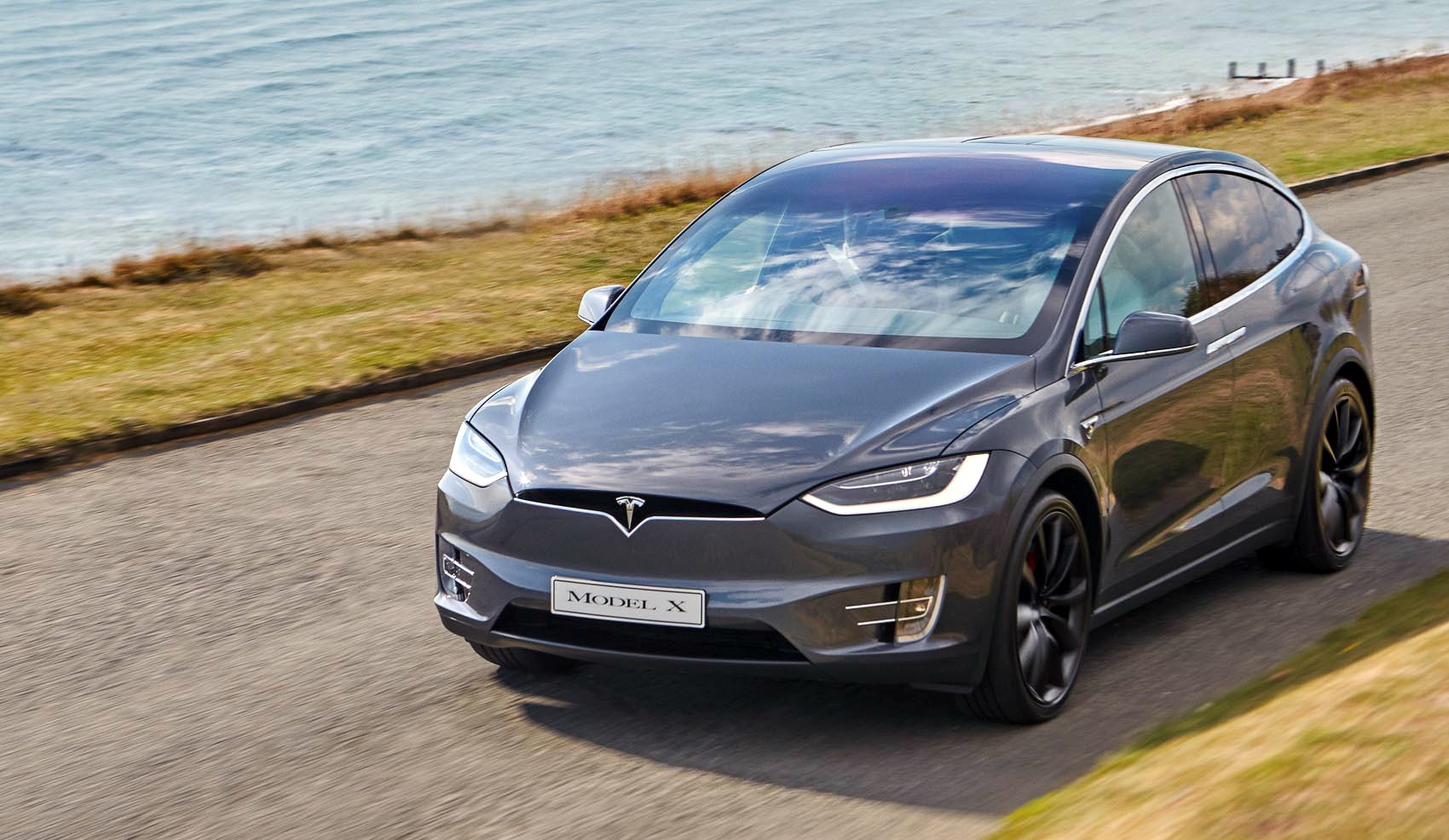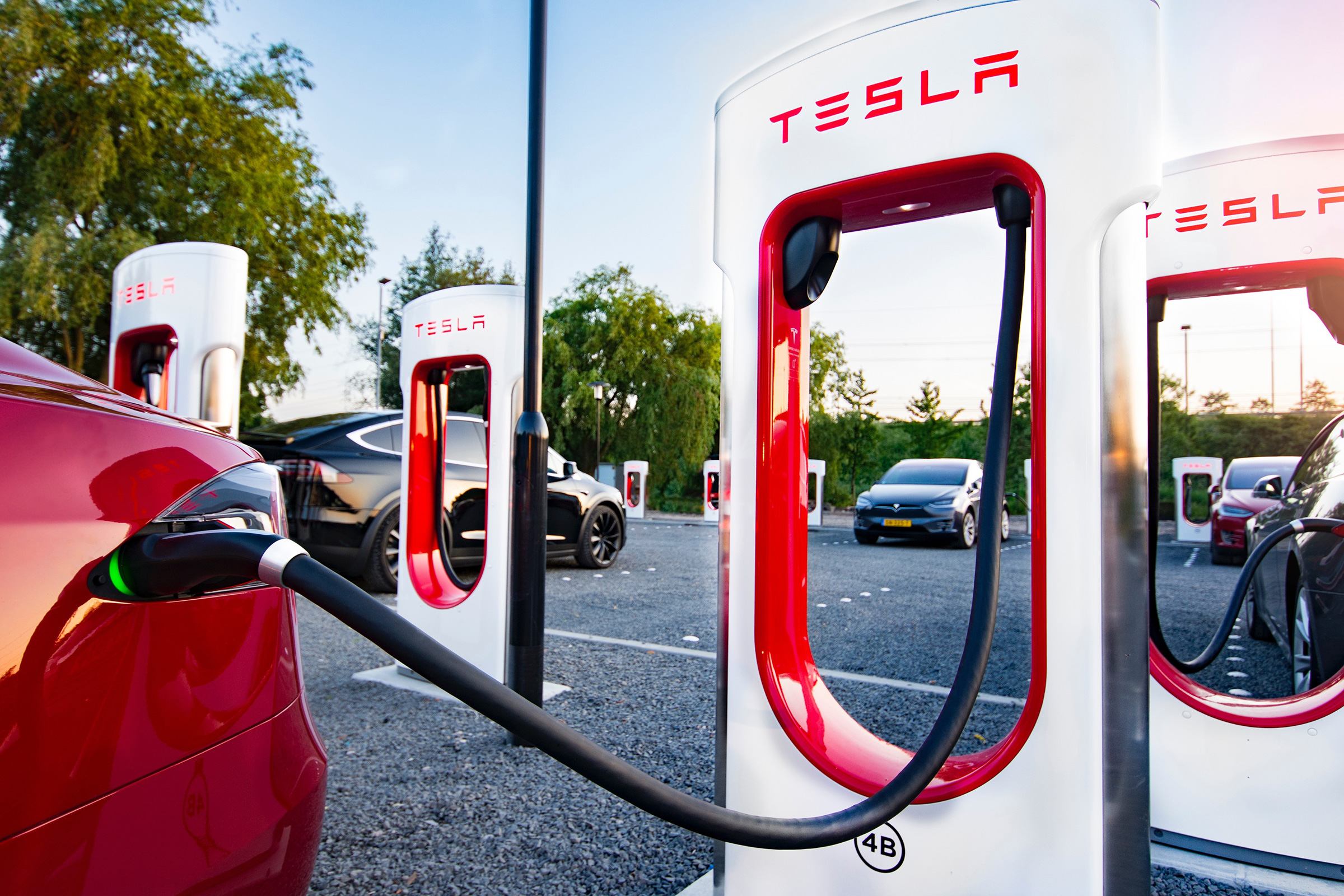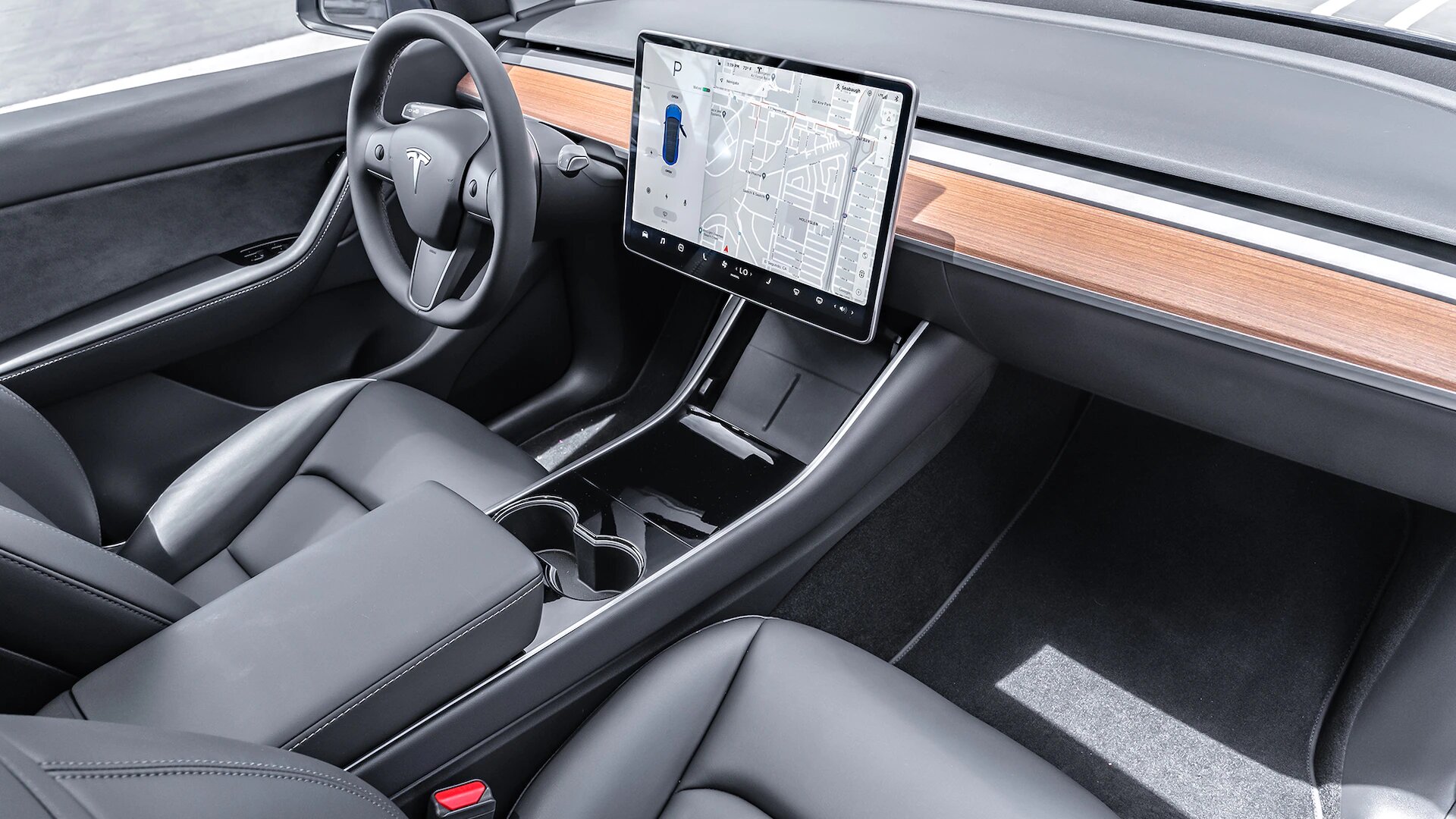Although first invented in 1830, electric vehicles became quite popular only in the 1930s, and quickly got over dominated in the market by gasoline cars that offered more performance and much more extended travel range.
Today, however, electric vehicles again get the deserved attention. Climate change, world crisis, gasoline prices, air pollution, and many other modern problems can be partially solved with the transition from gasoline vehicles to electrical cars.
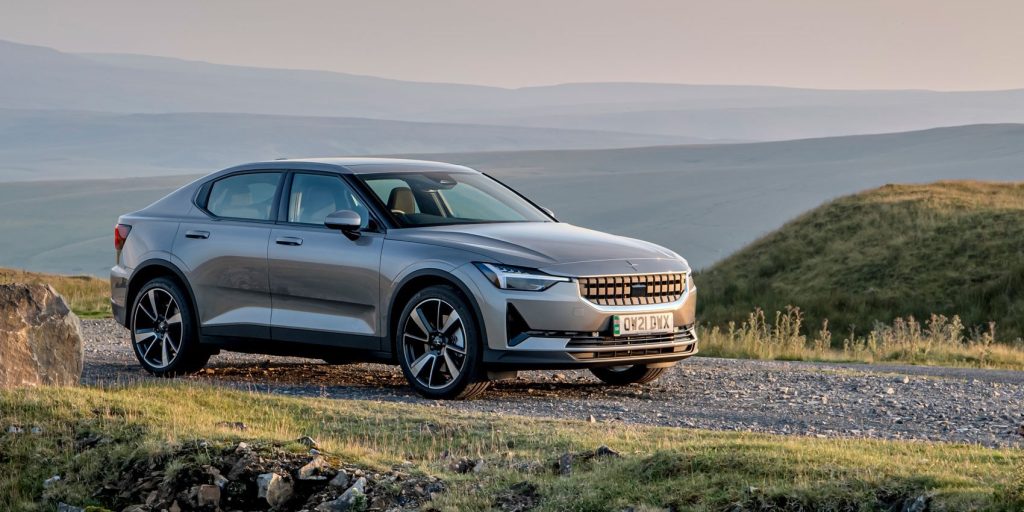
Why Don’t Electric Cars Dominate the Market Today?
We know that today gasoline vehicles create more expenses than provide us with advantages, so why don’t people hurry to switch to electric vehicles instead?
What is stopping many people from renouncing gasoline vehicles is something called range anxiety. This anxiety manifests itself in the fear of not having enough charge in the battery to reach the destination. And range anxiety is quite justified knowing that less than 150 000 charging outlets are available throughout the United States in the middle of 2022. This number is actually pretty low when we take into consideration that electric vehicles like Tesla got attention from customers more than five years ago. Another problem is that many charging stations are concentrated around big cities and particular states.
The problem with the insufficient amount of charging stations is promised to be resolved by 2025. The approximate number of public stations announced to be installed around the US and Europe is eight million.
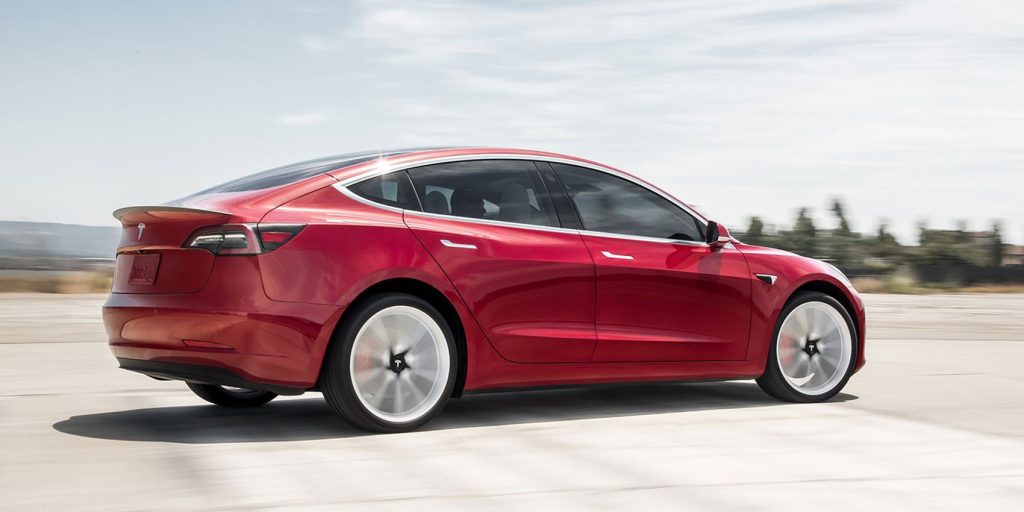
EV Charging: What is It?
The process of charging the battery of an electric vehicle by transferring the energy from an external source is called EV charging. Mainly a plug-in charger is used in most electric cars, and it can be connected to the standard electrical wall outlet. It actually looks a lot like charging your smartphone, where you have the charger and all you need is the outlet.
And, as you could have guessed, this is the problem with charging stations. When you are on the road, you can’t just use the outlet in anyone’s house. So you have to be sure there are enough charging stations installed at convenient distances from one another throughout the country, so you won’t be afraid to get stuck in the middle of nowhere.
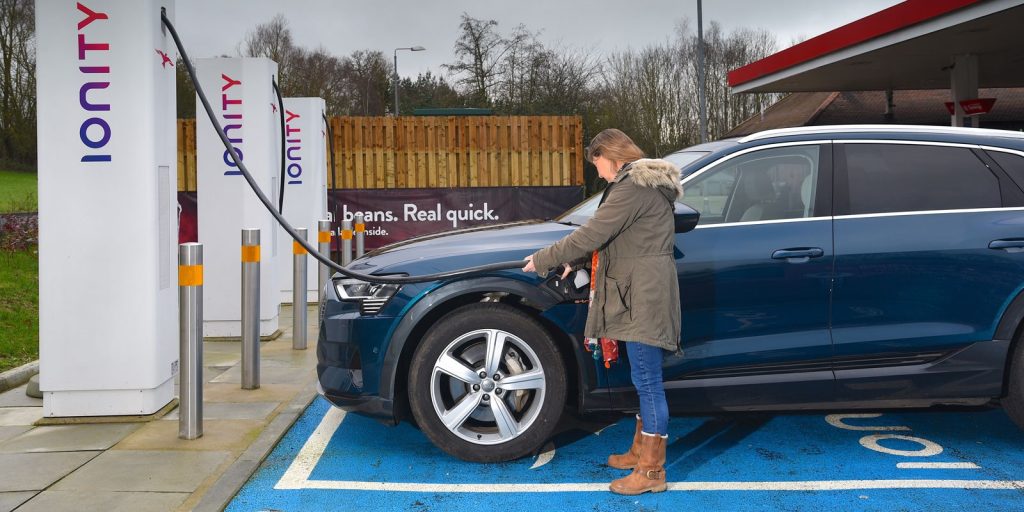
What are the Mechanics of EV Charging?
The most common way of EV charging is transferring and converting energy from the outlet into the EV battery. The outlet sends the AC energy, which is called alternating current, while the vehicle’s battery can store DC energy, which means direct current.
The converting of the current happens in the middle after the outlet sends the energy, but before it reaches the battery. There is a special charger installed inside the vehicle that is responsible for converting. This process happens automatically while the car is plugged into the outlet.
Two types of external chargers exist, with different mechanics when it comes to the type of electrical current. AC-type sends alternating current, leaving the conversion to the vehicle. DC-type chargers convert the energy before sending it to the vehicle. This type has increased charging speed, due to bypassing the internal conversion, the battery just charges immediately. But not all vehicles are compatible with DC-type chargers, so that’s something to consider when buying an electric car.
Types of EV Chargers: Depending On the Charging Speed
Three levels of EV chargers exist today, each level corresponds to a higher charging speed. Level 1 is slow, level 2 is considerably fast, and level 3 is ultra-fast or rapid. The amperage or current is the main difference between levels, it affects the charging speed.
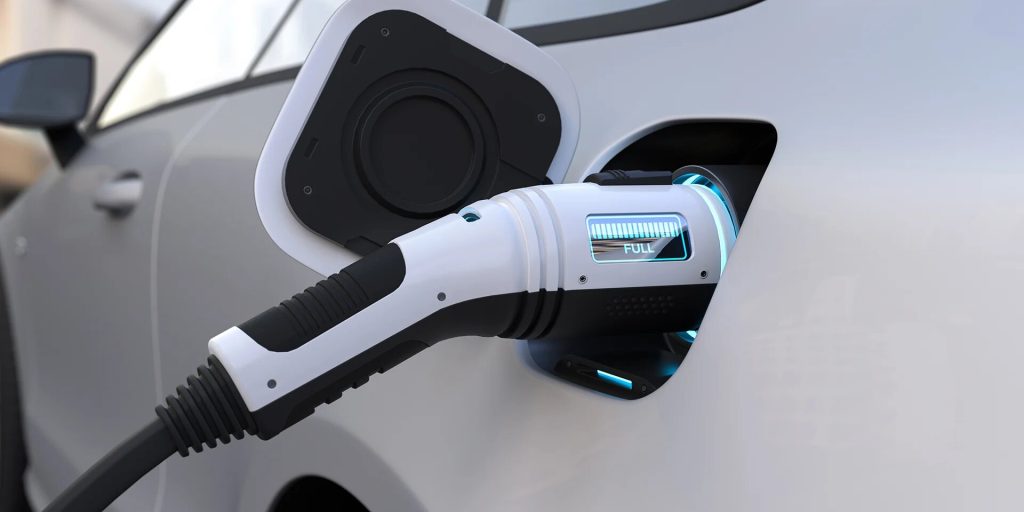
Level 1 EV charger: household charging
Level 1 electric vehicle charger is plugged into the standard 120 volts outlet that can be found in any house in the USA. This is the slowest charger of all three. It uses J1772 EV connectors and provides from 1 to 2.3 kW.
One hour of charging using a Level 1 charger gives enough power to travel the distance between three and seven miles. It takes up to eighteen hours to fully charge the standard BEV battery.
This type of EV charger is healthy for the battery but can only be used at home, because of how slowly it works. This is why Level 1 chargers are used either at home or as a backup alternative when Level 2 or 3 are not available in the vicinity. BEVS and PHEVS are compatible with Level 1 chargers, but if your vehicle is constantly used, Level 2 or 3 are what you’re going to use much more frequently.
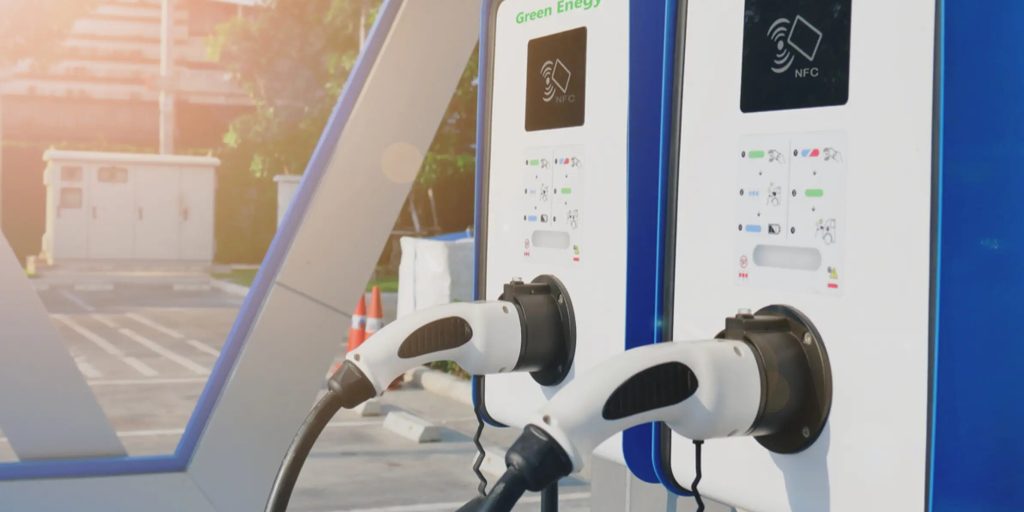
Level 2 EV charger: the most popular type in US and EU
Level 2 chargers provide from 3 to 22 kW and use outlets from 208 to 240 volt in North America. J1772 connector, specifically a type one, is the one that’s being used for Level 2 chargers in North America, Japan, and Canada.
One hour of charging with Level 2 type provides enough power for up to seventy-five miles of driving distance. The full charging time is somewhere between four and six hours, which is even less than a full night of charging.
Level 2 EV chargers can be found in all public charging stations. Moreover, special charging equipment of this level can be installed and used anywhere else: at work, at home, and even at public places like hotels, airports, and train stations.
Level 2 charging equipment is probably the best purchase for the electric vehicle one can have in their garage. Both 1 and 2 levels provide the electric vehicle with AC power.
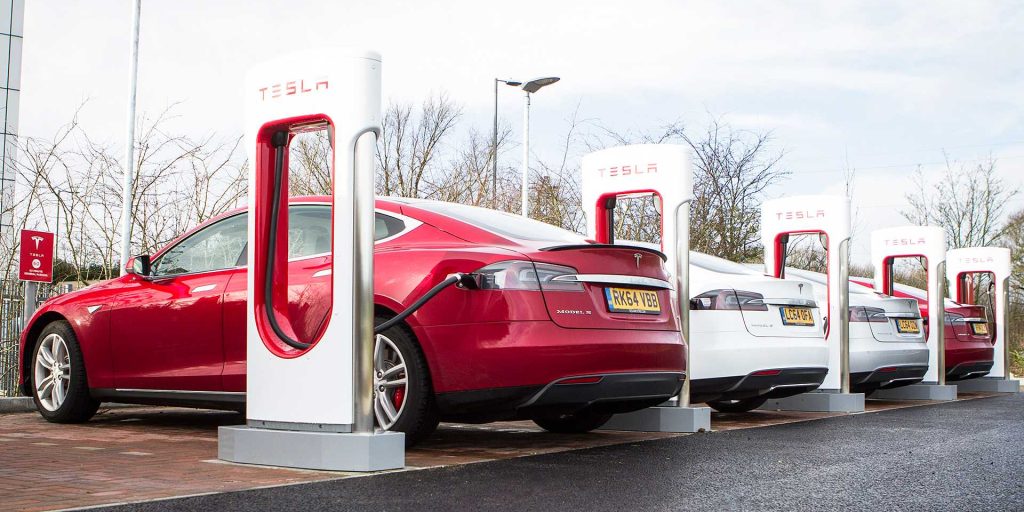
Level 3 EV charger: powerful and fast charging
DCFC chargers, which stands for Direct Current Fast Charger, are level 3 chargers, which are the most powerful type today. Level 3 chargers convert AC to DC before sending it directly to the vehicle, which significantly increases the charging speed. This type provides from 15 to more than 350 kW and can fully charge an electric vehicle in twenty minutes.
Level 3 chargers can be usually found at some charging stations along the highway and motorways since this is the best solution for charging when traveling long distances. Sometimes DCFC can also be found in parking lots, taxi hubs, supermarkets, and distribution centers. Some public places where people park for a short period of time started to implement level 3 chargers for vehicle owners’ convenience.
With the electric cars industry manufacturing electric trucks, buses, and other heavy job vehicles, the demand for DCFC chargers rises. Some companies promise to develop chargers with up to 1MW power, but this is still a long way to be widespread for an everyday driver.
EV Chargers: Types of Connectors for Level 3
CCS connectors include two types most common in the United States and Europe. CCS type 1 and type 2 are the agreed standard among the auto manufacturers. They are reliable and provide a high speed of charging.
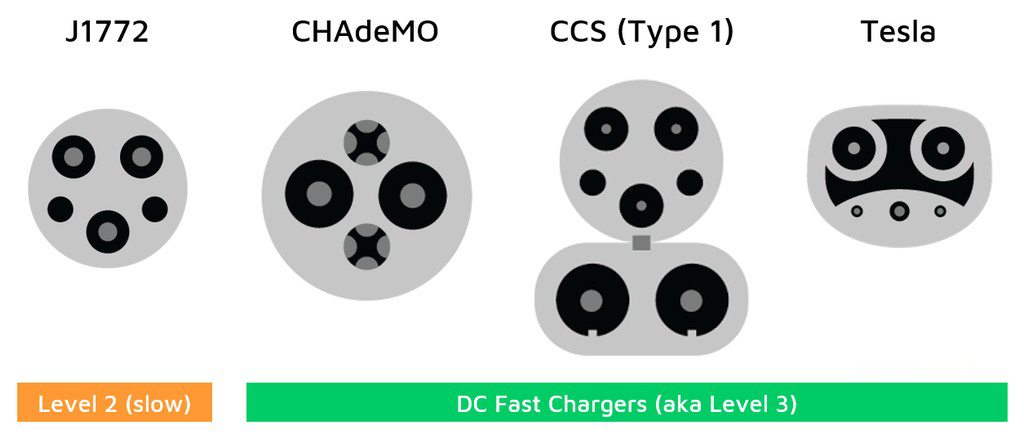
CHAdeMO connectors are usually found in Japanese cars, although some manufacturers from Japan, like Nissan, already switched to CCS connectors for vehicles produced in North America or Europe. CHAdeMO provides the same amount of performance but takes up more space since there are two separate sockets.
Tesla Supercharger Connectors are designed specifically for Tesla supercharger stations, and it’s designed to receive both AC and DC power.
GB/T connectors are the standard in China and the most common type in vehicles manufactured for China.
Different connectors are used for level 2 and level 3 EV chargers. Different vehicles have specific inlets, but there are lots of aftermarket adapters that will help you connect to other charging connectors.
Wireless Electric Vehicle Charging: The Promising Future
You are probably familiar with modern smartphones that can be charged with special pads that allow wireless charging. The same technology can be used for electric vehicles, but it’s still a long way from being widely implemented in the EV charging industry. Some charging pads for electric vehicles are already have their place in the market, but they aren’t available for every car model.
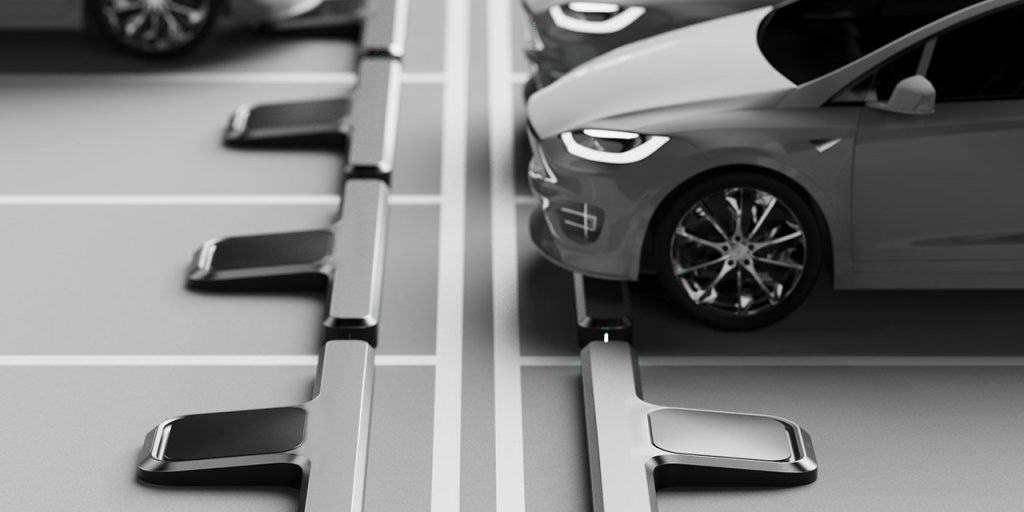
EV Charging Time: What Affects It?
Different factors may change the amount of time required for complete charging. Some of the most significant are the following.
- Difference in the charging rate between the vehicle and the charger. For instance, if your vehicle has a 50kW charging rate, while the charger you are connected to only sends out 10kW, the vehicle will receive only 10kW from the charger. Of course, it will significantly increase the time you have to wait while the vehicle charges.
- The size and the condition of the battery affect the time it will take to become fully charged. The size is measured in kWh, the higher the capacity, the longer it will take to completely charge. Of course, if the battery is in bad shape, it will also compromise the ability to quickly charge up.
- External conditions. If it’s cold outside, the temperature will affect the lithium-based battery, slowing down the charging process.
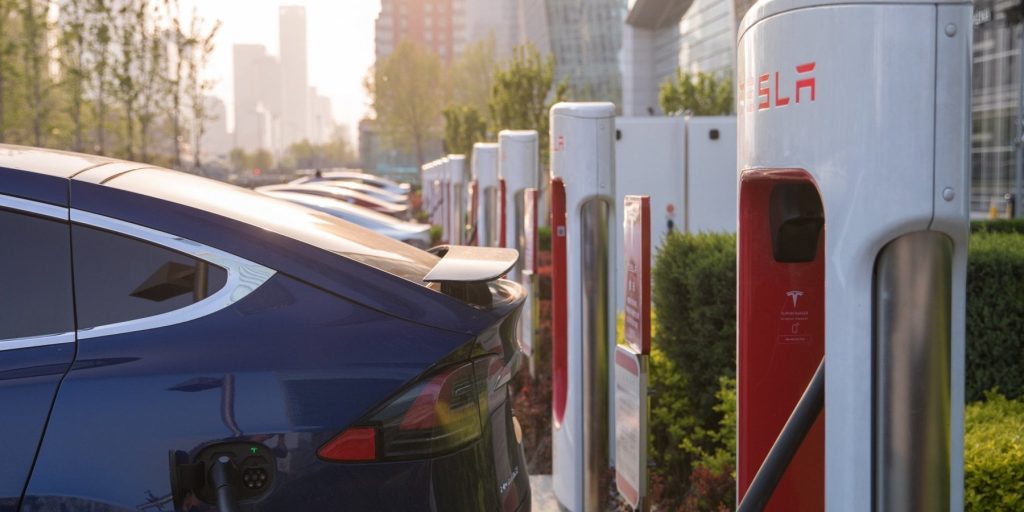
How Much does It Cost to Charge an Electric Vehicle?
The average amount of money you have to spend to fully charge the electric car is between ten and thirty dollars.
It is pretty cheap to charge the electric car at home, but there is no way to avoid using public charging stations. The common price for using Level 2 public charging stations in 2022 is between $0.30 and $0.60 per kWh. Level 3 charging stations are more expensive due to more power consumed and less time required.
Tesla Superchargers have a fee of about $0.30 per kWh, although if the vehicle was bought before 2017, the charging will be free-of-charge.
In general, prices vary depending on the type of charger, location, and the station providing it. Some restaurants and retailers provide free-of-charge EV charging stations to attract customers. And some employers, keeping up with the times, provide free EV charging to encourage the transition to gasoline-free vehicles.
